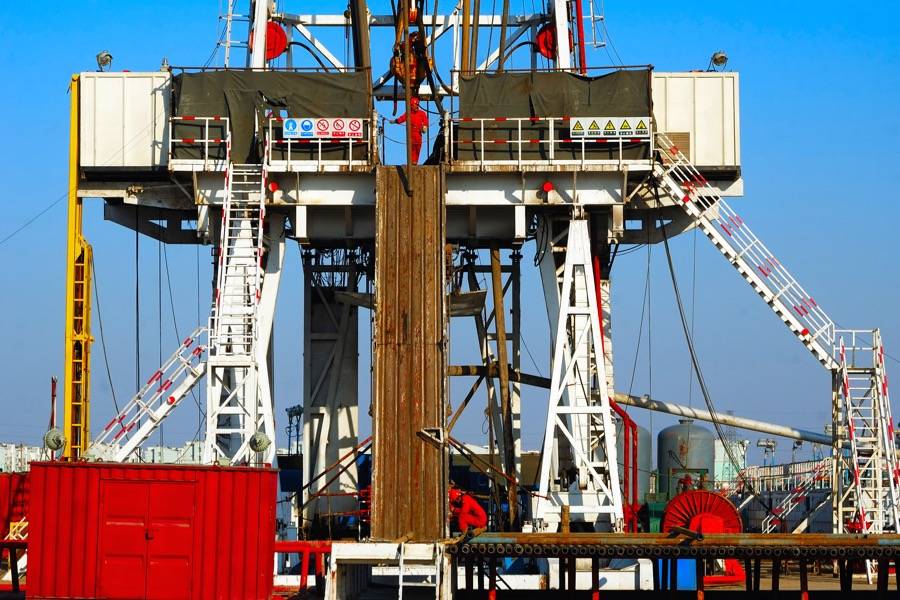Last Week in World Oil:
Prices
- While strong Asian economic data offers hope that oil demand will strengthen, rebounding Libyan production – with the Sharara field resuming production – offset some strength in crude prices. Brent started this week at US$53/b, while WTI edged up into the low US$50/b levels.
Upstream & Midstream
- As the shine continues to come off oil sands, ConocoPhillips will be selling much of its Canadian oil sands assets to Cenovus for C$17.7 billion (US$13.3 billion). The assets include COP’s 50% non-operator interest in Foster Creek Christine Lake, along with most of its Deep Basin gas assets. The assets have an expected production of 298,000 boe/d per year.
- Ten new oil rigs and five new gas rigs entered service in the US last week, bringing the total active rig count to 824, attracted by crude prices steadying around the US$50/b level. However, Canada lost 30 rigs, split evenly between oil and gas sites, facing more headwinds in terms of cost.
Downstream
- Contrary to the expectation that a mature market like the US would shed refineries, two new refineries are being planned in Texas. Located within the hot Eagle Ford and Permian Basin shale plays, Raven Petroleum and MMEX Resurces are planning to a 50kb/d refinery each, focusing on processing light crude into gasoline for the Mexican market, which is short on the fuel and recently deregulated.
- Italy’s Trans Adriatic Pipeline (TAP) has been given the go-ahead by the country’s top country, extending the US$40 billion Southern Gas Corridor that will transport natural gas from Azerbaijan’s Shah Deniz gas field in the Caspian Sea through Turkey, Greece, Albania and now Italy.
Natural Gas and LNG
- Qatar has lifted its self-imposed moratorium on North Field. Development at the world’s largest natural gas field, shared between Qatar and Iran (which calls it South Pars), had been halted in 2005 to study the impact of rapid development under a huge slate of projects. Qatar now expects to start new production from the field – in the southernmost part – within five to seven years, potentially adding some 2 bcf/d of production, underlining Qatar’s throne as the world’s top LNG exporter.
- With the debate over the Nordstream-2 pipeline heating up, Poland is considering alternatives. The country is now considering building a second LNG terminal in the Baltic Sea to diversify its natural gas sources. Planned for 2021 with a budget of €700 million, it will serve as an alternative should the gas pipeline from Norway not come to fruition.
Corporate
- Saudi Arabia has decided to cut the amount of tax paid to the government by its state oil firm Saudi Aramco. The move to slash the tax rate from 85% to 50%, according to financial analysts, could boost the value of the national oil giant by as much as US$1 trillion as it prepares for its impending IPO that will likely be the world’s largest.
- Saudi Aramco has signed MoUs with ADNOC and green energy firm Masdar. The former focus on technological and efficiency cooperation, while the latter focuses on renewables and carbon management.
Last Week in Asian Oil:
Upstream & Midstream
- Just a few months after Iran regained its status as India’s top supplier of crude oil, that reign is under threat over a political squabble. Demanding that the development of Iran’s Farzad B gas field be awarded to an Indian consortium, the impasse has led New Delhi to order Indian state refiners to cut Iranian crude imports by a fifth – from 240 kb/d to 190 kb/d. In retaliation, Iran is threatening to reduce the discount it offers Indian buyers on freight from 80% to 60%. An Indian consortium headed up by ONGC was favourite to win the Farzad B concession, but the recent lifting of sanctions may be tempting Iran to look elsewhere for a better deal.
- Thailand will be holding petroleum concession auctions for the Erawan and Bongkot fields this December. Currently operated by Chevron and PTTEP, respectively, the existing concessions for the fields expire in 2022 and 2023, with the auction aiming to introduce more competition into Thailand’s upstream industry as well as introduce elements of PSCs.
Downstream & Shipping
- Sinopec will be centralising its domestic fuels procurement in its Beijing office from April, a move that streamlines operations for the state refiner but leaves teapot refiners at a disadvantage. Sinopec has previously acquired gasoline and diesel through its regional offices that dealt with local suppliers, but the move to centralise buying in Beijing seems a bid to bolster bargaining power by depressing third-party margins.
- Taiwan’s CPC will be starting trial runs of a new 150 kb/d CDU, two hydrotreaters with a total capacity of 70 kb/d and a 50 kb/d condensate splitter at its refinery in Talin in May. The move will modernise the aging refinery, which will have its existing 100 kb/d CDU scrapped, yielding a net capacity increase of 50 kb/d to 350 kb/d.
Natural Gas & LNG
- Japan’s Kansai Electric Power Co, the country’s second largest power utility, is setting up a trading unit in Singapore. Aimed at boosting its buying and negotiation power over LNG trade, moving from cumbersome multi-decade contracts to short-term, opportunistic trading, the new desk is one of a score set up in Singapore over the last year, strengthening the island nation’s bid to become Asia’s LNG trading hub.
- More woes at the massive Gorgon project, where production was halted at Train Two again, once of several shutdowns since it began producing gas last October. The most recent shutdown was linked to a ‘planned turnaround to enhance reliability.’ Meanwhile, production has kicked off at Train Three, the final production unit at Gorgon, ending a trouble-prone development period that Chevron will now be eager to monetise.
- Shell will be doubling the capacity of its planned LNG import facility at Hazira, India. Spurred by growing demand, the original plan called for capacity to be increased to 7.5 million tons by 2017, but Shell is now aiming to go higher to hit 10 million tons per year by 2020.
- Malaysia’s Petronas and Singapore’s Pavilion Energy have inked an MoU that will see both companies collaborate on LNG trading. Pavilion Energy, backed by Singapore Temasek, is the gatekeeper to Singapore’s LNG ambitions, made all the more important as it races to become an LNG hub.
This article was originally found on NrgEdge.net.








